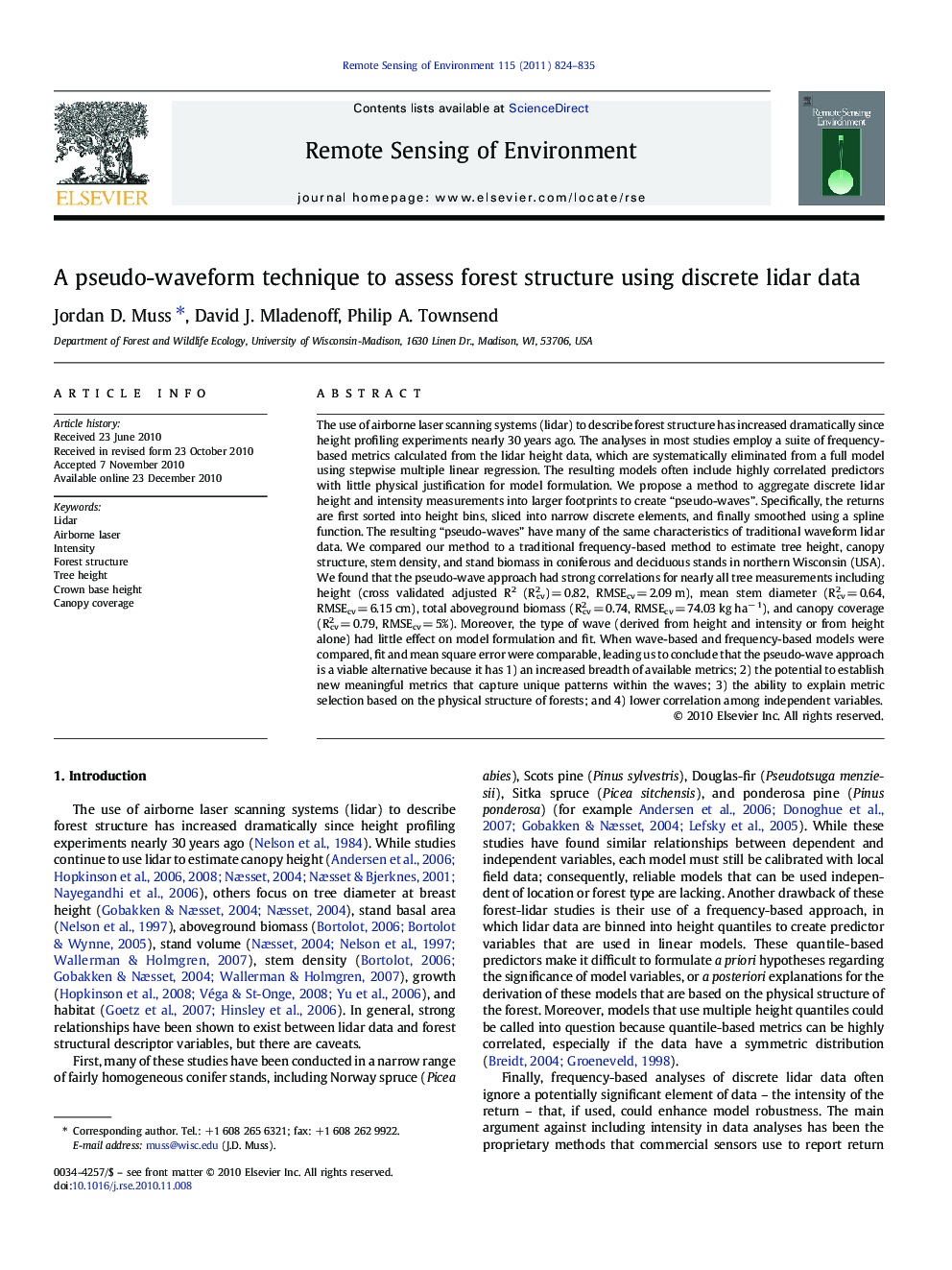| Article ID | Journal | Published Year | Pages | File Type |
|---|---|---|---|---|
| 4459574 | Remote Sensing of Environment | 2011 | 12 Pages |
The use of airborne laser scanning systems (lidar) to describe forest structure has increased dramatically since height profiling experiments nearly 30 years ago. The analyses in most studies employ a suite of frequency-based metrics calculated from the lidar height data, which are systematically eliminated from a full model using stepwise multiple linear regression. The resulting models often include highly correlated predictors with little physical justification for model formulation. We propose a method to aggregate discrete lidar height and intensity measurements into larger footprints to create “pseudo-waves”. Specifically, the returns are first sorted into height bins, sliced into narrow discrete elements, and finally smoothed using a spline function. The resulting “pseudo-waves” have many of the same characteristics of traditional waveform lidar data. We compared our method to a traditional frequency-based method to estimate tree height, canopy structure, stem density, and stand biomass in coniferous and deciduous stands in northern Wisconsin (USA). We found that the pseudo-wave approach had strong correlations for nearly all tree measurements including height (cross validated adjusted R2 (R2cv) = 0.82, RMSEcv = 2.09 m), mean stem diameter (R2cv = 0.64, RMSEcv = 6.15 cm), total aboveground biomass (R2cv = 0.74, RMSEcv = 74.03 kg ha− 1), and canopy coverage (R2cv = 0.79, RMSEcv = 5%). Moreover, the type of wave (derived from height and intensity or from height alone) had little effect on model formulation and fit. When wave-based and frequency-based models were compared, fit and mean square error were comparable, leading us to conclude that the pseudo-wave approach is a viable alternative because it has 1) an increased breadth of available metrics; 2) the potential to establish new meaningful metrics that capture unique patterns within the waves; 3) the ability to explain metric selection based on the physical structure of forests; and 4) lower correlation among independent variables.
Research Highlights► Pseudo-waves derived from discrete lidar correlated strongly with tree measurements. ► Intensity-based waves and height frequency-based waves had comparable performance. ► Fit and mean square error were comparable for wave-based and frequency-based models.
